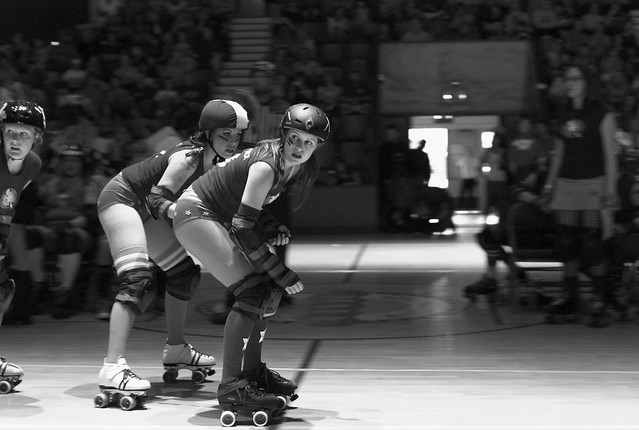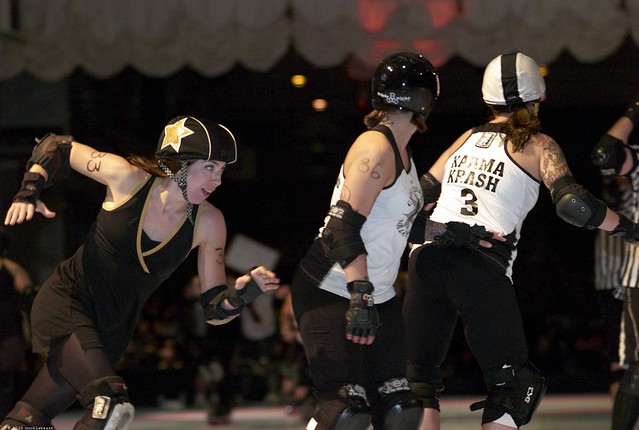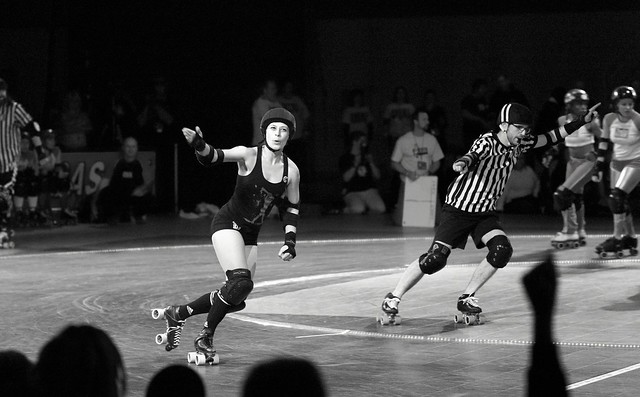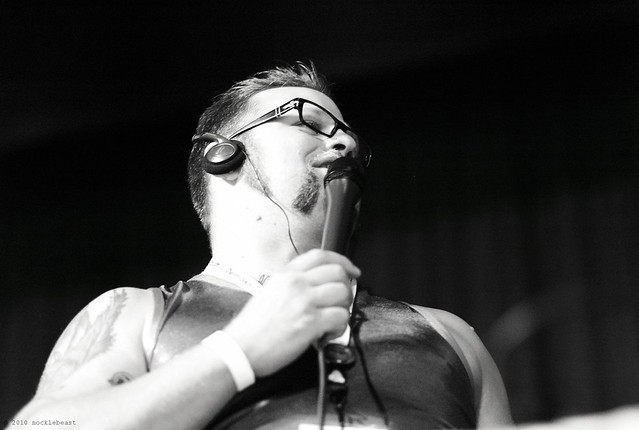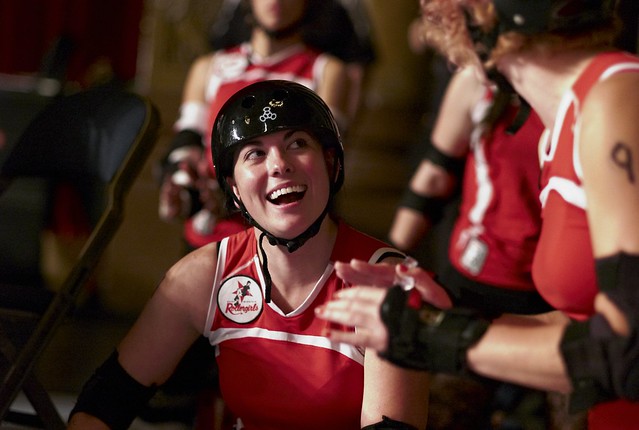The lens pictured below is attached to my old 35mm film SLR. The lens is a 80mm f2.8 medium format lens attached to a tilt adapter. Even with the lens tilted, the width of the lens ensures that the full 35mm frame of the film is fully illuminated. The tilt adapter allows the lens to be tilted in different directions by maximum amount of 8 degrees.
It is a ridiculous lens.
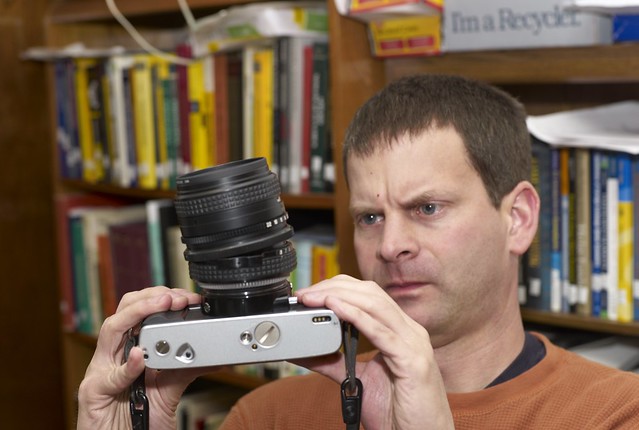 this lens isn't straight by nocklebeast
this lens isn't straight by nocklebeast
In most cameras people are familiar with, the axis of the lens is perpendicular to and centered on the center of the film frame or digital sensor.
However, in
a view camera, the sort of camera you see in
The Good, The Bad, and The Ugly just before Tuco is about to take a train ride (1:36), the lens is connected to the film plane with a flexible bellows. This way the lens may be either tilted away from perpendicular to the film, or the lens may be shifted away from center of the picture frame. Special lenses made to tilt or shift are available for SLRs as well. Shifting the lens alters the point of perspective independently from where the camera is situated. According to Sean Read in his review of the
Canon 24/3.5 L TS-E II Tilt/Shift lens this comes in handy for
architectural photography in tight places. When the lens is perpendicular to the film, the plane of maximum focus is also perpendicular to the film. But when lens is tilted, the plane of maximum focus is tilted as well, which comes in handy in architectural or product photography.
A odd tilt effect can even be achieved by "tilting the film" inside the camera as I do in a modified swing lens camera (the lens exposes the film as it travels in a circle, but the film isn't loaded into the camera in a circle).
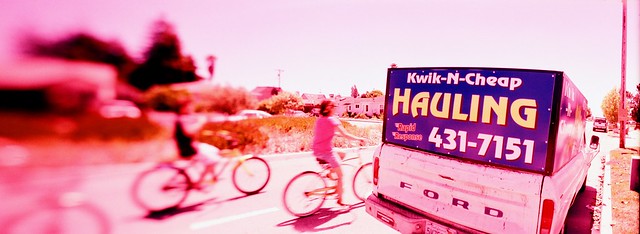 stretch bicycle by nocklebeast
stretch bicycle by nocklebeast
Tilting the lens allows the photographer to isolate the focus in a way that's a little different than
opening the lens to it's largest aperture. This photo of Precious N. Metal of the Pink Pistols was taken with
a normal lens with the aperture wide open. She is in focus, while her teammates in the background are increasingly out of focus the further they are away from the plane of maximum focus (about 6 feet away from me).
 Precious N Metal and the rest of the Pink Pistols do warm up drills before the big bout by nocklebeast
Precious N Metal and the rest of the Pink Pistols do warm up drills before the big bout by nocklebeast
With a tilt lens, the point of maximum focus can be placed both near and far.
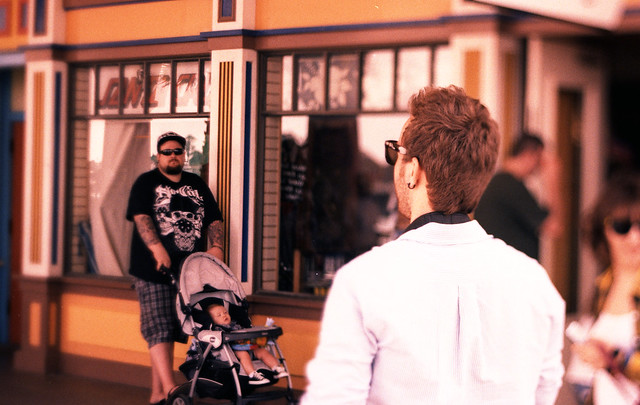 here and there by nocklebeast
here and there by nocklebeast
It seems to me that a tilt lens lends itself to a careful and deliberate way of working. Open the aperture wide open to allow you to see where the focus is on the ground glass of the SLR viewfinder. Then focus and shift or tilt the lens to place the focus where you want it to be. Frame the photo. Double check the focus. Stop down the lens as necessary to get the correct exposure. If you're taking a photo of a building or a bridge and the the building hasn't gone anywhere in the time you've been mucking about with the lens, take the photo already.
 danger no trespassing by nocklebeast
danger no trespassing by nocklebeast
If however your subject matter requires a bit more nimbleness such as sports photography or "street photography" (taking photos of people you don't know in public places) a tilt lens is probably one of the craziest tools you could use for these subjects. Occasionally, I get interesting photographs, sometimes even a gem, but most of the time it's just crazy.
 reaching by nocklebeast
reaching by nocklebeast
 Pippi Hardsocking by nocklebeast
Pippi Hardsocking by nocklebeast
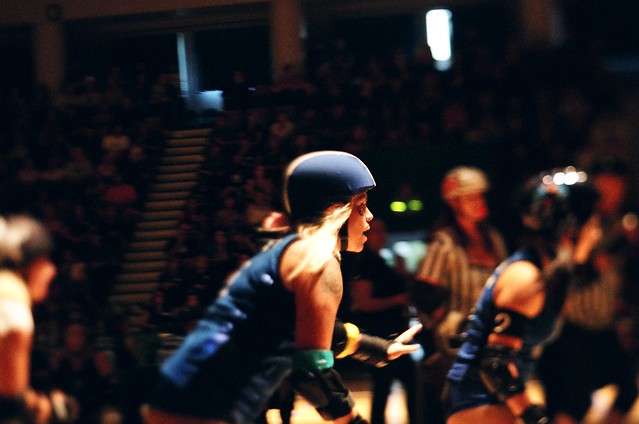 Pigeon by nocklebeast
Pigeon by nocklebeast
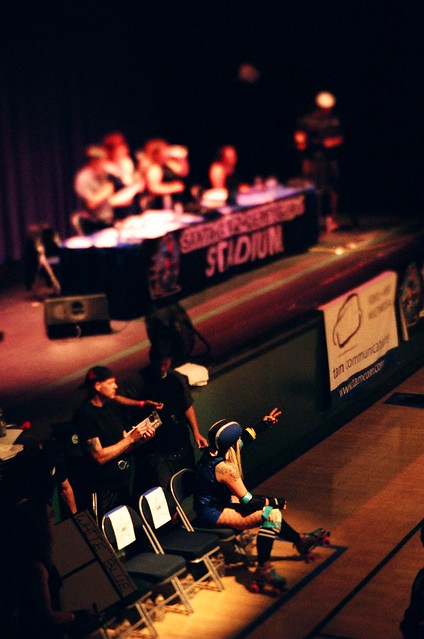 Pigeon got a penalty by nocklebeast
For some more tilt-shift derby photos, Axle Adams shot a bunch of nice photos last March. He's got lots of light. He's shooting at f4 which gives a little more depth of field (than f2.8), and it looks like he's tilting the lens in a different direction than most of my shots.
Pigeon got a penalty by nocklebeast
For some more tilt-shift derby photos, Axle Adams shot a bunch of nice photos last March. He's got lots of light. He's shooting at f4 which gives a little more depth of field (than f2.8), and it looks like he's tilting the lens in a different direction than most of my shots.
To my knowledge, no one has used
a view camera for roller derby photography.
Not yet anyway.













